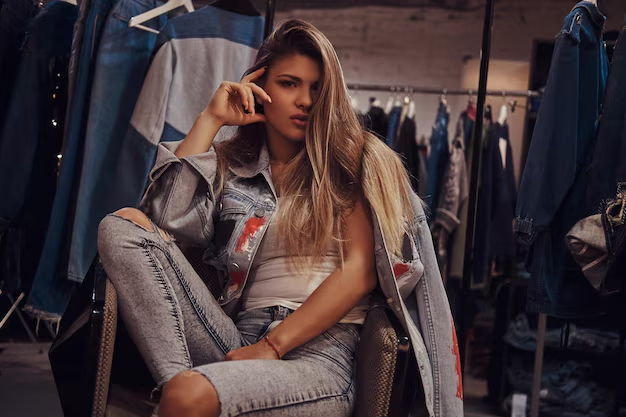High fashion, or couture, has long been a symbol of exclusivity, craftsmanship, and opulence. From its early origins in the ateliers of Paris to its modern-day influence on global fashion trends, couture has continually evolved, shaping the way we view and experience fashion. The story of high fashion is one of creativity, artistry, and resilience, where innovation blends with tradition to produce pieces that are as much works of art as they are garments. In this article, we will take a journey through the evolution of haute couture and explore its cultural significance, the artistry behind it, and its future.
The Birth of Haute Couture: The 19th Century
The birth of haute couture can be traced back to the mid-19th century, with the visionary designs of English designer Charles Frederick Worth. Worth, considered the father of haute couture, opened his fashion house in Paris in 1858. His designs were a revolution in a time when clothing was made to order by dressmakers working for individual clients. Worth’s designs were not just about craftsmanship but also about creating a brand identity. His clothing was luxurious and carefully tailored, with an emphasis on high-quality fabrics and unique silhouettes.
In 1868, Worth held the first-ever fashion show, presenting his creations on live models rather than on mannequins. This innovation marked a turning point in the way fashion was presented to the public. Worth’s designs were exclusive, expensive, and available only to the elite, which established the foundation for couture’s reputation as a symbol of luxury.
The Golden Age: Early to Mid-20th Century
As the 20th century progressed, Paris continued to dominate the world of haute couture. Designers like Coco Chanel, Christian Dior, and Yves Saint Laurent became household names, each leaving an indelible mark on the fashion industry.
Chanel’s revolutionary designs, including the little black dress and the introduction of comfortable, elegant clothing for women, challenged traditional fashion norms. She focused on simplicity, functionality, and chicness, rejecting the opulent, restrictive styles that had defined women’s fashion for centuries.
Christian Dior’s “New Look” in 1947 was a pivotal moment in fashion history. His voluminous skirts and narrow waists presented a stark contrast to the more austere styles of the wartime era. Dior’s designs embodied post-war optimism and femininity, making haute couture more accessible to the masses while still maintaining its exclusivity.
Yves Saint Laurent’s innovations, such as the tuxedo suit for women, introduced androgynous elements into high fashion. His work redefined the boundaries of gender and style, making haute couture more fluid and adaptable to the changing times.
The Rise of Globalization and Ready-to-Wear: Late 20th Century
By the late 20th century, the fashion industry had seen immense changes. The rise of ready-to-wear collections began to overshadow haute couture in terms of both production and consumer appeal. Designers such as Giorgio Armani, Jean-Paul Gaultier, and Jean-Charles de Castelbajac, along with the emergence of luxury fashion houses like Louis Vuitton, began to cater to a broader global audience. Ready-to-wear collections allowed for more accessible high fashion, offering high-end styles at more affordable prices.
However, haute couture remained an important fixture in the fashion world, often serving as the ultimate symbol of status and creativity. The advent of luxury brands and globalization helped to bring couture into the spotlight, making it an aspirational part of popular culture. Major fashion houses continued to host couture shows, with the collections acting as the epitome of creativity, craftsmanship, and the height of fashion.
Modern Haute Couture: 21st Century and Beyond
In the 21st century, haute couture has adapted to meet the demands of the modern world. Designers continue to push the boundaries of fashion, incorporating new materials, techniques, and digital innovations into their creations. Fashion houses such as Chanel, Givenchy, and Valentino are still considered the pinnacle of couture, but new names like Raf Simons, Maria Grazia Chiuri, and Demna Gvasalia are redefining the art form with modern twists.
Digital technology has also played a role in transforming haute couture. Virtual fashion shows and digital presentations, propelled by the COVID-19 pandemic, have allowed designers to reach a wider audience, adding a layer of accessibility to couture. The integration of artificial intelligence and 3D printing into the design process has opened up new possibilities, offering designers the chance to create garments that are not only visually stunning but also highly functional and sustainable.
Couture is no longer just about showcasing extravagant, impractical pieces. Today’s haute couture is about creating sustainable, innovative designs that represent the future of fashion. As environmental concerns grow, many couture houses are turning toward sustainable materials and ethical production practices to reduce their environmental impact.
Frequently Asked Questions (FAQs)
- What is haute couture? Haute couture refers to high-end fashion that is custom-made for an individual client. It involves the creation of one-of-a-kind pieces made by skilled artisans using luxurious fabrics and detailed craftsmanship.
- Who can wear haute couture? Haute couture is typically reserved for the elite and those with significant financial means, though some pieces are also worn by celebrities and fashion icons for red carpet events.
- How does haute couture differ from ready-to-wear? Haute couture is made-to-measure, one-of-a-kind, and often custom-fitted, while ready-to-wear collections are mass-produced and sold in standard sizes.
- What does it take to become a haute couture designer? Haute couture designers must be members of the Chambre Syndicale de la Haute Couture in Paris, which ensures their creations meet the strict standards of craftsmanship, quality, and originality.
- Is haute couture still relevant today? Yes, haute couture remains relevant as a symbol of luxury and creativity, though it has evolved to reflect modern sensibilities and address contemporary concerns such as sustainability.
- What is the most expensive haute couture piece ever made? Some haute couture dresses can cost millions of dollars, with bespoke gowns created for private clients or celebrity red carpet appearances topping the charts in terms of price.
- How has digital technology impacted haute couture? Digital technology has expanded the possibilities of haute couture by allowing for virtual fashion shows, digital sketches, and the use of 3D printing and AI to design intricate garments.
Conclusion
The evolution of haute couture is a testament to the enduring power of creativity and innovation in fashion. From its humble beginnings in the ateliers of Paris to its status as an international symbol of luxury and craftsmanship, haute couture has continually pushed the boundaries of what fashion can achieve. Today, it stands as both a historical legacy and a future-forward industry, where tradition and innovation meet to create some of the most extraordinary pieces of art in the fashion world.
Key Takeaways
- Haute couture began in the 19th century with Charles Frederick Worth and has evolved to represent luxury, exclusivity, and creativity.
- Iconic designers like Coco Chanel, Christian Dior, and Yves Saint Laurent shaped haute couture in the 20th century, making it synonymous with innovation and femininity.
- The rise of ready-to-wear and digital technology has impacted haute couture, but it remains a symbol of craftsmanship and luxury.
- Today’s haute couture is embracing sustainability and modern technology, ensuring its continued relevance in the 21st century.

